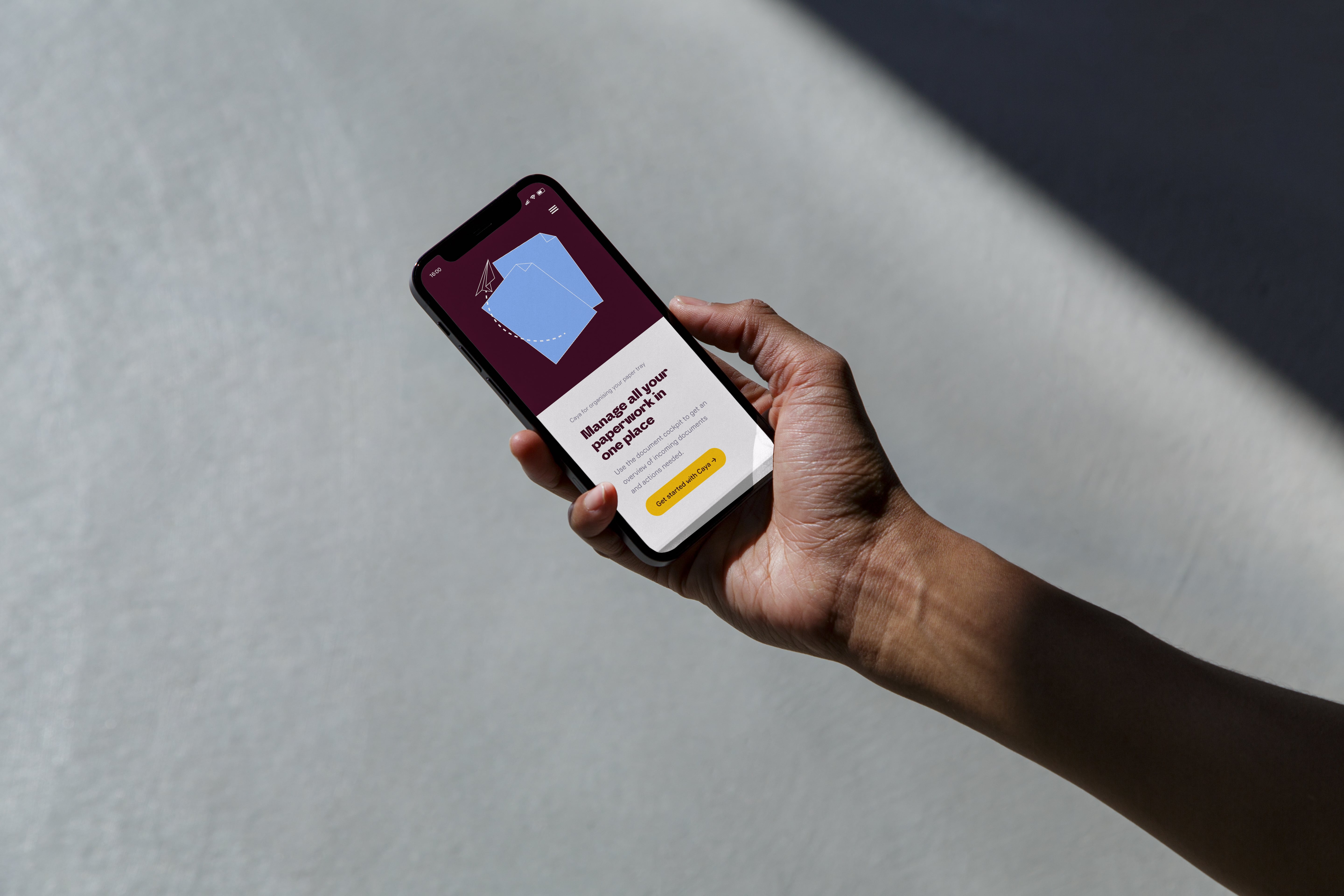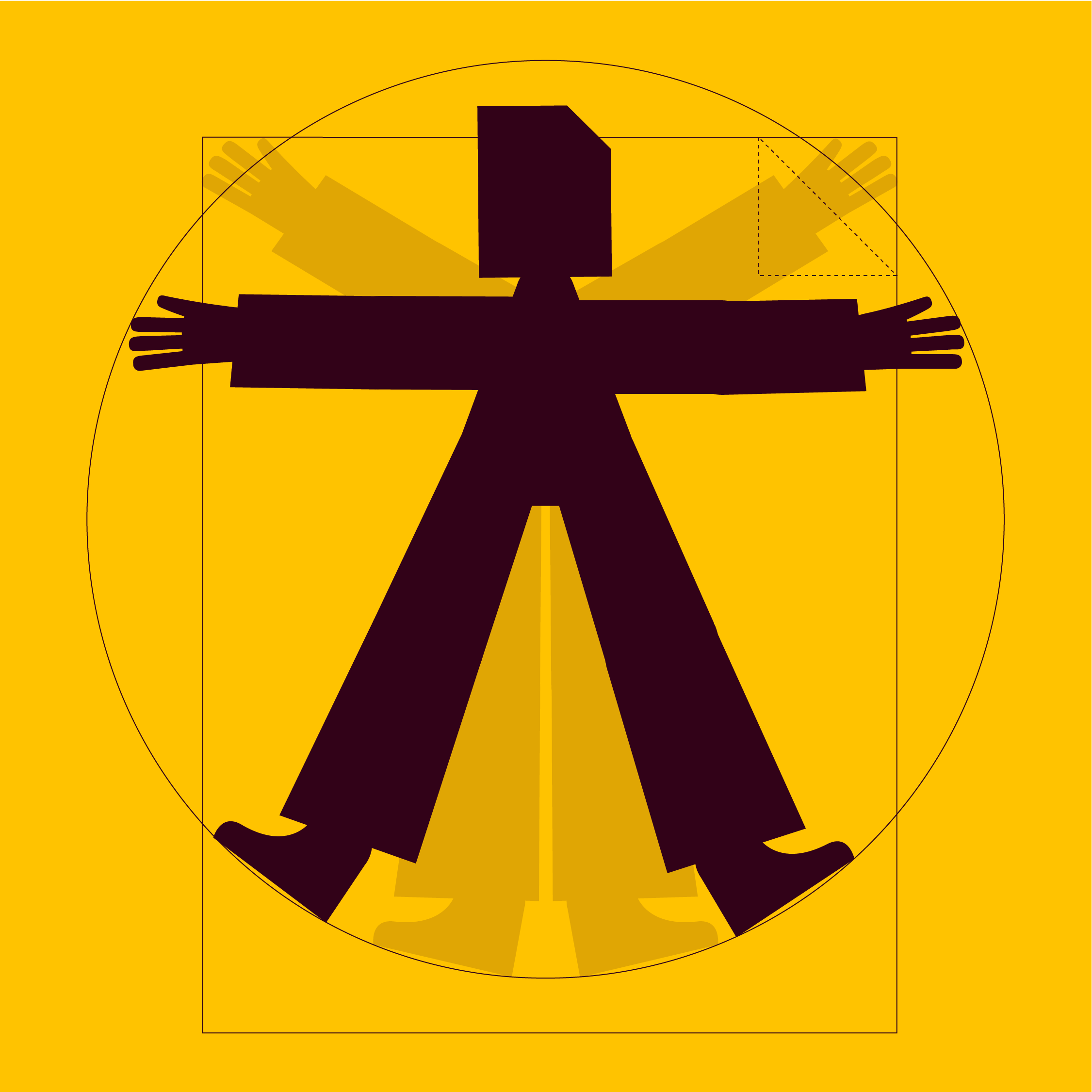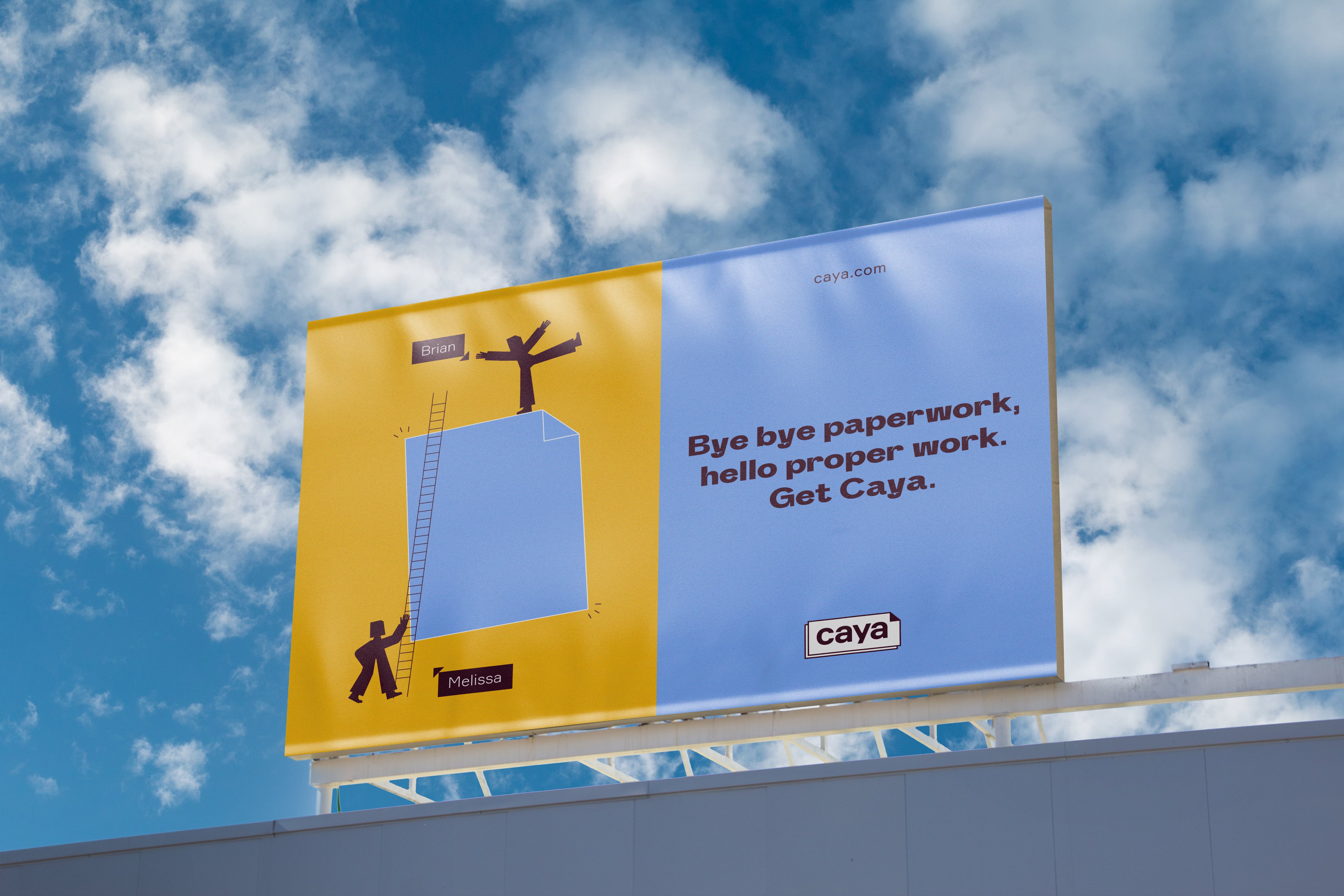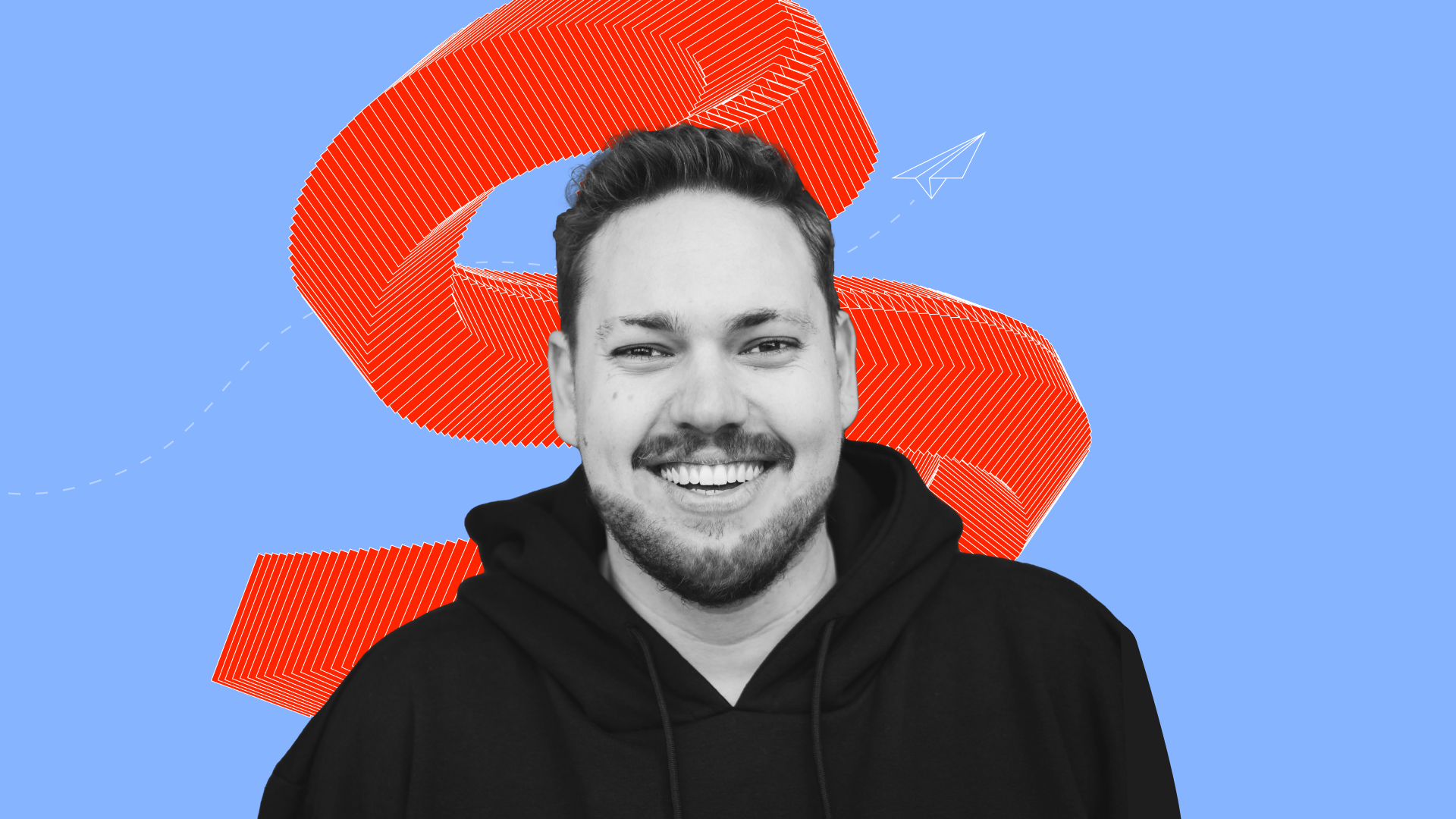Last week, the Caya team was celebrating the big release of the new identity. Now it’s all about the next big bundle of things they need to prepare for the fundraising. This remote first SaaS company went from twenty people to fifty people in just eight months. Caya is taking on many challenges – and ready to take on the next. We spoke with Alexander Schneekloth, Founder of Caya, about investing in branding as a SaaS company, unexpected delights and dancing Cayans in Slack.
It’s a good time to lead Caya, right?
Actually, it is. We had a summer party yesterday, opening our new office. There is a big 3D Caya logo on the wall and parts of the office are colored in the Caya blue. Internally, everyone is super hyped. It’s lovely to see how many people identify with the brand and how many people feel like it’s a step forward for the company. It’s seen as a symbol for growing into the next phase.
-1661845043.png)
Let’s go back to the start: your original briefing document. It mentioned you want to play in the champions league and roll out the brand internationally. Can you tell a little bit more about the stage Caya was in when writing this briefing?
At the beginning of the process, the company was almost five years old. It was in its final stage of the second pivot we would do as a company. When we started off, Caya was a B2C company. In the last two years, we turned Caya into a B2B company. Now, we’re turning Caya into a SaaS company. So far, we just had an evolution of positioning and branding, but at the core everything was still about consumers.
Turning this around, putting documents, businesses and office workers at the core of the brand together with our tone of voice and visual identity – it made us become louder. Now, we’re being seen for who we are. I honestly believe that the product we built has no reason to hide. We were silent before. Our goal was to change this and to go out to people about who we are.
Our tone of voice and visual identity made us become louder. Now, we’re being seen for who we are. I honestly believe that the product we built has no reason to hide.
You could have invested in other things like growth marketing, growth hacking or maybe even more in product. Why did you decide to invest in branding at this point?
The last two years, we’ve been building a foundation for growth. This foundation is product, features, organization. But it’s also brand as one of the core assets. We had already built the other parts of this foundation, whereas the brand stayed behind. It was pretty much untouched in the process of getting Caya ready to scale. The brand was the last puzzle piece in order to have a puzzle where you look at it and say: this is ready to put money on, this is ready to raise a series A.
How come that it was never touched? You touched it in the very first stages of course, but why wasn’t that the stage where you wanted to develop a brand?
It’s always about priorities. In the end, I believe the brand is one of the core parts of your growth engine. Our growth was always good enough to not make it a huge pain point. Now, it certainly became one as we needed to reflect the changes Caya was experiencing. Do we continue to evolve what we had, or do we get professional help to do something new?
It’s clear what we decided to do – and it was a good decision to get fresh eyes and thoughts on this project. To help us and not keep swimming in the lake we’ve always been in.
Do we continue to evolve what we had, or do we get professional help to do something new? It was good to have a pair of fresh eyes on this project. To not keep swimming in the lake we’ve always been in.
What were you expecting the rebranding process to be like?
I was hoping for a very open-minded process that allows us to look forward instead of looking at where we were coming from. Who do we want to be? Not only this year, but over the course of the next five, ten years. How do we want to be perceived? This was one of the core things to me, exploring the identity of the company.

Zooming in on the actual end result, the brand. There has been a lot of decision making in order to get to a brand. Sometimes they’re hard, difficult. Sometimes they’re actually unexpected delights. I’m curious if you had any unexpected delights along the way?
One was definitely when Eveline read the brand story to us for the first time. Not even the final version, but the first version. It was really like you could close your eyes and feel the brand. It’s a nice way to make people experience the brand. When I first read it, it was okay. But having it read to you with emotion makes it even more powerful.
The other outstanding moment was when you showed the first three approaches of the visual identity. It felt very crazy and positively edgy. It was really hard to envision how it was going to come out in the end. It’s very impressive for me to see how, after two feedback rounds, we turned it into a well composed brand that just naturally comes together. You guys did a very good job at making it stand out from the crowd.”
We can imagine the Cayans might also be a part of that
They are definitely a part of the culture: we have little Cayans as mascots and dancing Cayans as slack emojis.


Imagine similar SaaS brands out there, doubting whether to rebrand or not to rebrand. What are some learnings that you can give them?
We were in the lucky situation that the company wasn’t that big by then. So as a result, I as founder could manage and own the process. That was very beneficial to the result in two ways: because of decisions that were taken, but also because of priorities internally.
Number two is that we put a lot of time and effort into our briefing. Trying to be very explicit and clear about what we want and what we don’t want. Not only in terms of project scope, but also in terms of result. That’s something that’s very important to getting such a good result.
A rebranding can feel like a new life for Caya. Where are we heading next?
When we look at the roadmap, there are two things ahead. Number one is filling this ten out of ten positioning and identity with life. Stepping up to the standards and promises that we make with the brand. The whole company is pushed by the new brand to reach new standards.
We’re setting the foundation for going international next year. That’s a big milestone for the company. I’m not a fan of internationalizing too early, because you duplicate everything that’s still wrong in the growth engine. But we set the fundamentals now. We’re ready to scale Caya, not only in Germany, but also beyond borders.

Learn more about our Caya collab
by reading the case study.
